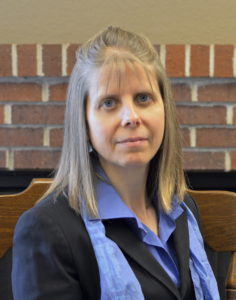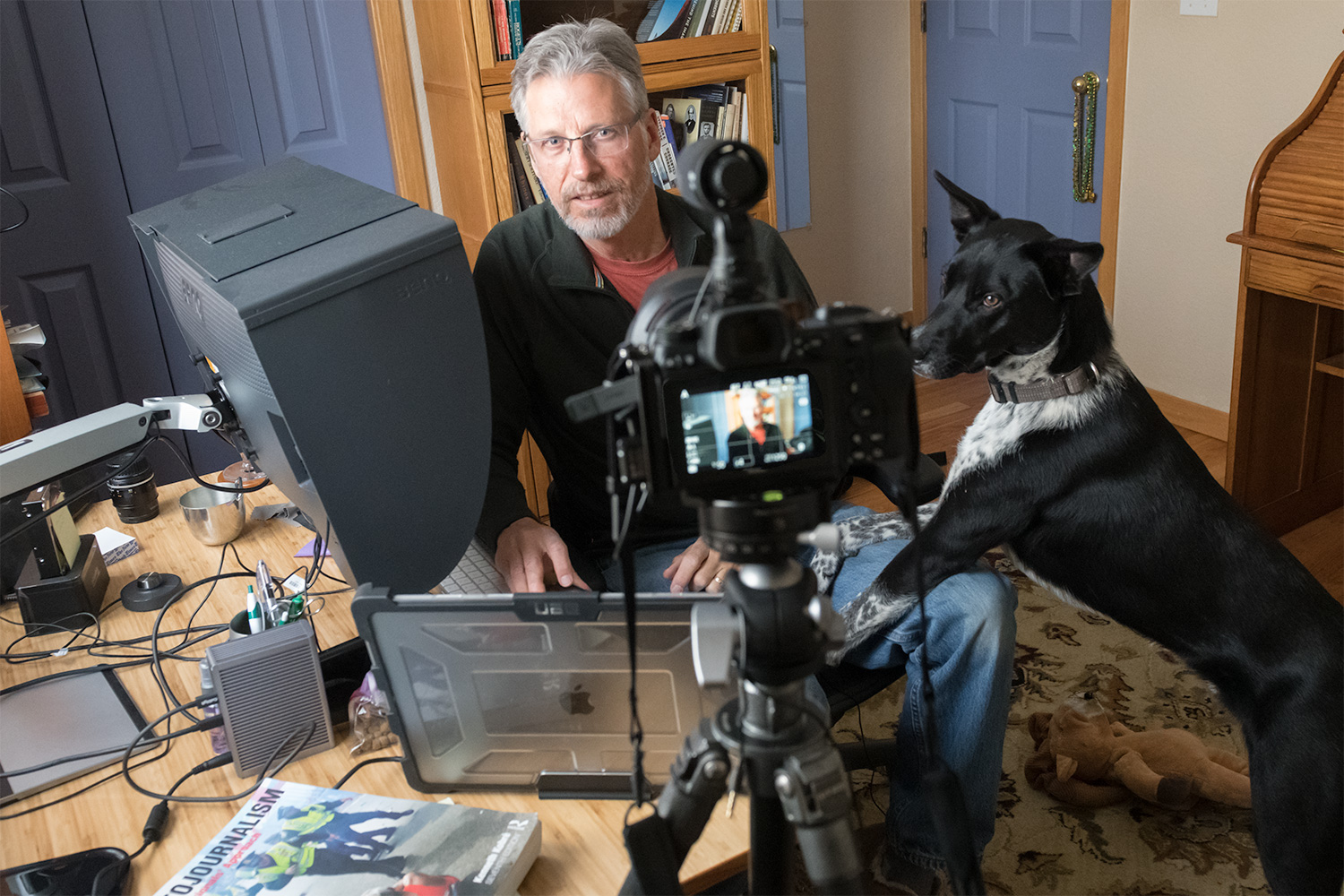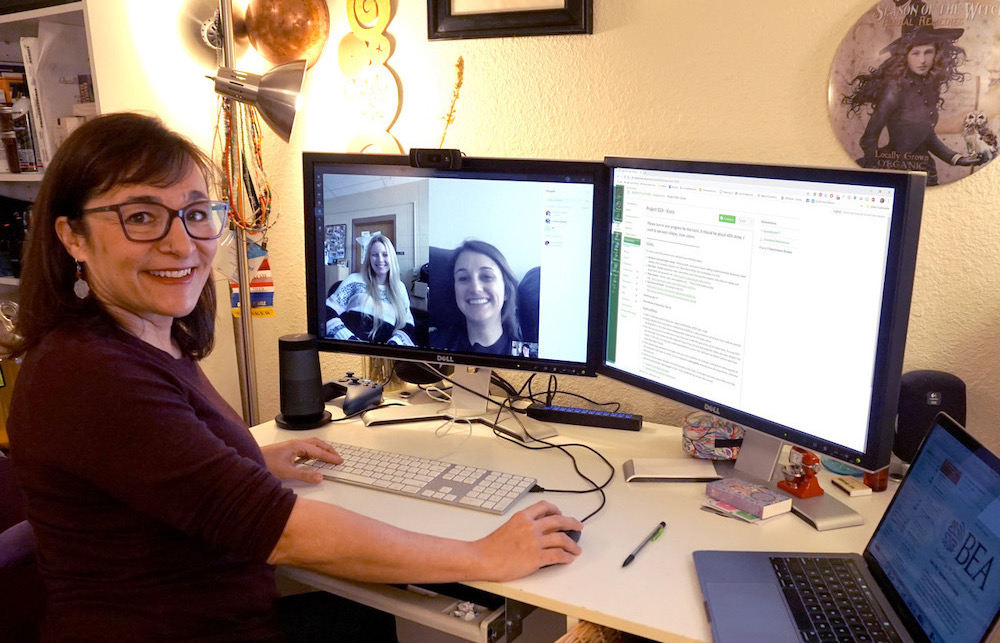Many faculty across the country have been scrambling to move their courses online in recent weeks, in light of the coronavirus pandemic. And it’s been uncharted territory for instructors who have never taught an online class.
But Colorado State University is a nationally established leader in delivering education remotely, and expertise is available on campus to assist those who are new to the game.
Three of the University’s leaders in online education recently sat down for an interview — conducted remotely on Microsoft Teams, naturally — about their top advice, common questions and possible pitfalls, as well as available resources. They say there are two types of challenges: dealing with technical issues like what tools to use, and determining which teaching/learning strategies work best online.
“What we’ve been talking with faculty about is the recommendation to keep it simple,” said Brandon Bernier, interim assistant vice president for information technology. “There are going to be so many differences in our students’ environments, whether it’s the technology they have, the time zones they might be in, or other accommodations they might need.”
In fact, phase one of the “Keep Teaching” initiative was simple: Get faculty who don’t already have their courses on the Canvas platform to move their materials into CSU’s online learning management system.
Communication will be key

“I also think communication between students and faculty will be an important one, because there are a lot of options,” Bernier said, noting that students will be using a variety of devices — and connection speeds — to participate remotely. “As you introduce any new technology, there’s always a period of change and just getting used to something new. The more proactive that we all can be, the better the environment is going to work.”
Gwen Gorzelsky, executive director of The Institute for Learning and Teaching, added that faculty should design their online coursework to allow students flexibility, in case they or a family member gets sick.
“The projections would suggest that as many as half or two-thirds of students in any course are going to become ill, and possibly seriously ill, for a period of time during the semester,” she said, adding that the same may be true for faculty. “So we need to structure coursework so that makeup work — for students and instructors — is feasible in the circumstances we have. It’s probably not feasible, even if my courses are low enrollment, to have individualized makeup work assignments for two-thirds of my students.”
Beyond the class period

For example, instead of attempting to deliver live lectures remotely during the established class period, Gorzelsky recommends recording lectures – chunked into 10-minute or shorter segments for downloading with limited bandwidth – so that students can watch them when it’s convenient. By the same token, she suggests broadening the timeframe for online interaction beyond the traditional class period. In other words, instead of requiring students to post something in “Discussions” on Canvas during the established course meeting time, give them the entire day to do it, in an “asynchronous” approach.
“We probably will have a lot of people who won’t be able to meet in those same time blocks,” Gorzelsky said. “Faculty want to create an experience that’s close to what’s familiar as a best practice, which is great. But they can provide a truly high-quality experience through asynchronous tools, and given our circumstances, that’s probably better for faculty and students.”
Chris LaBelle, interim senior director of CSU Online, stressed the importance that social interaction — not just between faculty and students, but among students themselves — will play in these times.
“When faculty try to understand the needs of students at this scale, there are important curricular, financial, accessibility, technical and communication needs that influence how online courses should be designed,” he said. “Because of that, it’s important that when faculty move their course content online, they consider the social needs of their students who didn’t initially sign up to complete their course online and may be dealing with new pandemic-related challenges at home.”
According to LaBelle, faculty can simplify their course design by chunking course materials and maximizing opportunities for students to collaborate. Even though online learning is meant to be inherently student-centered, LaBelle said that “it’s essential that instructors stay connected to their students by personalizing the learning experience as much as possible and tracking more frequently how their students are doing in relation to course engagement.”
‘Light-bulb moment’

Teaching online not only gives faculty a new set of technical skills, but leads to epiphanies that can be employed in the traditional classroom setting. Gorzelsky said faculty who create an online course for the first time often have a “big light-bulb moment” when they realize that teaching remotely requires a learner-centered approach.
“It’s not that I hand you my knowledge in a box,” she explained. “Instead, as humans, we have to do it ourselves; we have to put the pieces together. You could give me the best principles in the world … but we still need to practice, to apply what we’re learning. Sometimes faculty say, ‘Wow, this approach I learned in teaching online would apply in my face-to-face course.’”
“In online education, the foundation is very learner-centered,” LaBelle added. “It’s a very different experience than a synchronous, classroom-based format where the instructor’s lecture is often the centerpiece of the learning experience. The learning outcomes are typically very similar between both modes, but the pedagogy and technologies that inform how both types of courses are designed are quite different.”
These three experts say one of the most common questions they’ve been hearing from CSU faculty involves proctoring exams and quizzes. Gorzelsky recommends using the ProctorU platform’s auto-launch mode for high-stakes exams, but “Quizzes” on Canvas for low-stakes quizzes. It’s a good reminder for faculty teaching in any setting that frequent low-stakes assessments promote learning that translates to stronger performance on high-stakes assessments.
“It’s an opportunity for faculty to build in science-of-learning techniques, which include frequent, spaced, low-stakes practice and interleaved practice with different concepts,” she said.
When faced with questions related to accessibility — like a student with a hearing impairment requesting an American Sign Language version of a video, for instance — faculty are advised to turn to the Assistive Technology Resource Center.
Silver linings
In the long run, the three agree that this experience, while challenging, will bear fruit.
“There are going to be so many good things — new initiatives and ways of learning, teaching, communicating and connecting — that are going to come out of this that we would never have experienced before,” Bernier said.
“This is an opportunity to improve our system and nature of our collaboration, because this is really stress-testing everything we do,” LaBelle added. “We see this as an opportunity to see where those pressure points are.”
They also lauded the work that’s going on at the college level to make the transition go smoothly.
“The colleges have been doing a phenomenal job,” LaBelle said. “I’ve been very impressed by the level of coordination, professionalism and effectiveness at the college level. They get a lot of credit. Once we get through all of this, I think there will have been a lot of lessons learned related to improved access for our students and learner-centered pedagogy for our faculty.”
“This absolutely has been a team effort,” Bernier said. “Not only do you have central resources, but all of the distributed IT members, the Canvas coordinators and the faculty in the colleges working directly with each other. It really has been an all-hands effort, and that’s why we were in such a good position heading into this week.”

